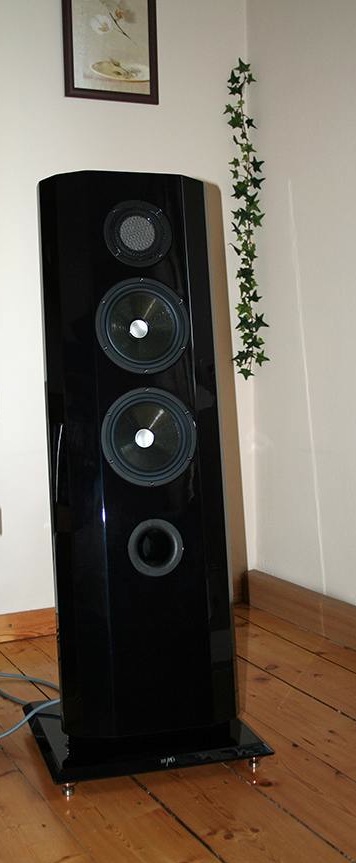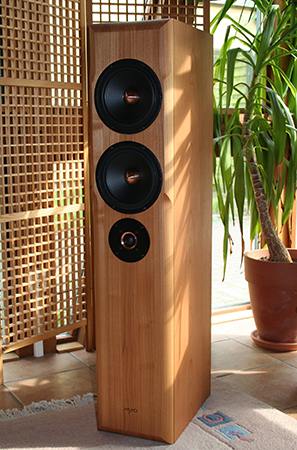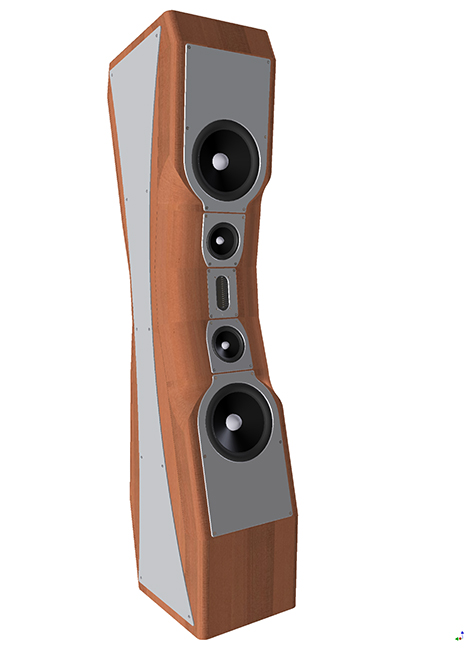The Hearing Man
ContentsFundamentals of perceptionIn hearing humans, two essential aspects always meet:
Hearing physiology comprises the frequency bandwidth and the dynamic range of the auditory system as well as the conduction of nerve impulses to the brain. The entire auditory perception is essentially determined by the genetic, the natural and the social determination of the individual. Humans always perceive natural sound events, such as music, on the basis of their individual determination, in natura as well as in reproduction. The result is always a sense of hearing. What we lack when listening to reproduced music is the reference for what information is actually on the recordings. Thus our auditory perception is always subject to a listening expectation. When we hear an original sound event, e.g. the transient of a guitar string, we hear a certain signal structure. We hear this signal structure with all the physiological and psychological characteristics of our sense of hearing. This results in our auditory impression of the original. If we want to perceive a reproduction exactly like the original, then the reproduced sound structure must (!) be identical with the original sound structure, so that we have the same hearing result with all physiological and psychological characteristics of our hearing sense. The reproduction must not carry any assumptions of hearing-physiological or hearing-psychological peculiarities, because twice hearing-physiological and hearing-psychological influences in succession are absurd and illogical and can never lead to the same hearing impression as the original. Our perception is ultimately a model. There are limits, exclusions, experiences and assumptions, and the vital aspect of error compensation. The more a sound event, e.g. the voice of someone we know, is superimposed by extraneous sounds, the more intensively we fall back on our memory on the basis of the recognized "sound fragments". We thus assemble the sound character of what we remember with what we really hear. A subjective inner reconstruction. Because of the unconsciousness of the process, we believe we hear the voice of the person or the shattering glass better than is actually the case. Since there is quite a large collective intersection of experiences, at least within a cultural group, the subjective error compensations also lead to similar results or judgments. Thus, a group of subjects may arrive at similar judgments. The exciting thing about this is that the greater the alienation, the more all participants fall back on their respective subjective memories (collective intersection). |
Hearing typesPeople can be divided into three hearing types according to their preferences. What is important in differentiating the types is that every physically and mentally healthy person carries the perceptual patterns of all three types. That which establishes an assignment to a hearing type is its preference in perception. It is also important to remember that there is a range of variation in each person. This is dependent on many factors such as hunger, stress, breathing, well-being, etc. Therefore, we prefer the music that suits us in the most different states / moods. The "pressure hearing type" or "tonal hearing type"The main points are:
Sensory perception of pressure is one of the simplest forms of perception possible even in simple life forms. Being able to detect the frequency of pressure fluctuations, to recognize and remember pitch in the brain is an extension of this perceptual ability. Dynamics, in particular, are perceived as the difference between the mean of loud passages and the mean of quiet passages. Pressure listeners feel a sense of well-being only when bass sound waves stimulate the inner abdomen. They feel overwhelmed by too much information and too fast processes. This is often accompanied by a limited perception of spatiality. |
The "Rhythm Hearing Type" or "Analytical Hearing Type"The main focuses are:
A more complex and faster perception is required when it comes to impulse dynamics and complex vibration patterns. Fast analytical abilities are demanded of the brain here. |
The "structural hearing type" or "sensual hearing type"The focal points are:
This hearing type possesses the distinctive characteristics of visualization and spatial perception. The ability to perceive extremely fast processes and highly complex structures is also one of its characteristics. |
|
In the type theory of Ayurveda, the different auditory sensations are expressed thus:
And this is exactly how one could evaluate the sound descriptions of different people who all get to hear the same music. What appeals emotionally to one, leaves the other cold. |
Phase shifts of continuous tones are inaudible because there are no references to other sound events. Phase shifts of certain sound components within a complex sound structure, on the other hand, are very audible. The audibility of amplitude frequency responses that are as linear as possible cannot be discussed in isolation, because we do not hear sound amplitude values per se. A sound pressure value is a constant. In contrast, we hear sound amplitude value 'changes' within a sound structure.
Phase sensitivity, and thus also the detection of errors in the phase response, differs depending on the frequency range. In the sensitive hearing range, we also perceive phase shifts more sensitively. At low frequencies, due to the wavelengths, the phenomenon occurs that phase shifts in the transmission of a sound (frequency mixture) pull the fundamental and overtones extremely apart in time, because 45° phase shift for low tones corresponds to a much longer time than for high tones with their short wavelengths.
The auditory sense reacts:
- very sensitive to phase shifts in the transient (especially in natural sound events).
- sensitive to phase shifts within sounds
- insensitive to phase shifts of isolated transient tones
When we talk about the audibility of measurement results, we can consequently only talk about complex sound events. All other statements are merely abstract subjective ideas about how one or another measured value might affect hearing. Pure speculation! Nobody will claim to be able to deduce the sound structure in his head from the frequency response and the group delay. Step responses are complex sound events. We hear differences in step responses just as we can distinguish the cracking of twigs or the clapping of hands. These are all very short sound pressure structures that we can clearly distinguish. We can even hear the different sound characters. This is clear for anyone to confirm from natural auditory experience. And what is true for step responses is also true for all sound structures used as test signals, such as a sine period or a sine burst etc.. They are all directly audible.
In the swing-in, the results are quite different due to the approximately 30 times (!) higher nerve firing rate associated with it, i.e. associated with maximally heightened sensory perception. And this enumeration could be continued infinitely. Listening experiences with short-time stimuli and the listening impressions of various seminar and workshop participants confirm the clear audibility of sound characteristics, especially with short-time stimuli. The hearing sensitivity of transient signals, on the other hand, is considerably lower! The fact that different stimuli produce the same auditory impression is incorrect due to the dynamic reaction and adaptation of the auditory system, especially to dynamic processes. Even in steady states, one can at most speak of a similarity. The fact that polarity differences are audible with functional monitoring equipment can thus be confirmed.
|
Example: |
But this is completely meaningless for the correct conversion of a loudspeaker! It does not matter for a transducer, whether it is a DA-converter or an electro-acoustic transducer, how the subjective listening process of one of the many billions of people takes place. Transducers, like all technical apparatus, are designed to perform specific tasks; they fulfill a role imposed by definition. A DA converter is supposed to reconstruct an original analog signal structure from zeros and ones. An electroacoustic transducer is supposed to convert an electrical signal structure fed to it into an equivalent sound structure. This is the only way to provide our auditory organ with a sound structure that is as close to reality as possible. What each individual then makes of it in his brain, that is up to each person.
<zurück: Myroklopädie>
<zurück: Myro>


